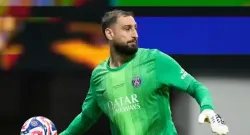
Picture Credit: Twitter
2 decades in Formula 1, 21 career-wins, 103 podiums, 46 fastest laps, still the third-highest tally ever behind Schumacher and Hamilton, and a plethora of ice cool moments, all of which culminated into a world title- Kimi Raikkonen is all set to leave F1 having blazed a trail of greatness whilst presiding over a debatable legacy.
How was he a grand talent when despite being in the sport for 20 years all he managed was a single world title?
And yet, he’s touted as an icon, a driver of a very high pedigree whose smooth and uncomplicated race-craft seamlessly complimented his uncomplicated personality.
Perhaps there’s a hint.
It’s in the fact that given Raikkonen, laconic, notoriously shy- and let’s face it- bored of the media still continues to find much love offers insight into a man who was doing that one thing most consistently and happily where others were also taking time for other shenanigans built around it.
Racing!
That’s what brought him to Formula 1. Now, having done that for no fewer than 341 races (entries) as of today, he’s leaving though not before covering a total distance in F1 that equates to two revolutions around the moon.
In an era stymied by short attention spans, this was Kimi doing the ironical; proving the worth of longevity in an age siding with instant messaging.
To travel as many miles that equate to completing two revolutions around the moon is, in mere thought, an effort more emotionally draining and mentally challenging even before being physically taxing.
A driver who emerged on the scene at the back of just 23 prior races (before he even earned his F1 super license), Kimi was already racing Alonso, Button, Schumacher and Barichello when the likes of Yuki Tsunoda, George Russell, Max Verstappen, Charles Leclerc and Esteban Ocon were still toddlers.
That he’s still racing the next generation of stars who are tasked with taking F1 miles ahead is a testimony to that very characteristic that’s so awfully underrated nowadays - longevity. And more than that - consistency!
Besides two rigorous records that prove the above and emphatically so - 7th most consecutive points scored in F1 history (325- 2012 Bahrain GP to 2013 Hungarian GP) and most consecutive race finishes in points (27, better than Schumacher), Raikkonen was also pulling off miracles as an oldie!
How?
During the 2020 Portuguese GP, which he began from sixteenth on the grid, Kimi wasted no time whatsoever in climbing ten spots to reach P6. What was phenomenal though wasn’t just that he did that in an Alfa Romeo, a really mediocre midfielder, but that his surge northward happened inside the opening lap at Portimao.
Proving time and again that he hadn’t lost the speed or the enviable car control - though certainly the ‘right’ car to contest with, Kimi was P2 at the restart at Monza 2020, and in pursuit of Gasly, the race-winner, before his damp squib machine got passed by a flurry of cars one after another.
Make no mistake though. He was also a driver who experienced heartbreaks such as losing out on what could’ve been a title in 2003 with McLaren, wherein he came second-best, though only 2 behind champion Schumacher (93 points) and the recalcitrant Ferrari of 2014 which enabled him to score only 55 points in comparison to Alonso’s 161, Raikkonen still persisted.
Giving great evidence of the desire of racing in a year where he was at his lowest ebb, as he took the Ferrari F14 T to a P4 at Spa, where he’s still hailed as the ‘King,’ being a four-time winner.
In between all of this jugglery, Kimi showed immense mastery in races such as the 2009 Belgian GP (his last-ever Belgian GP win) wherein in the final moments he came out of nowhere to past the ballsy Force India of Giancarlo Fisichella to clinch the win.
When they roared and cheered him, the King practiced abstinence from indulgence, refraining from getting consumed by the fanfare content largely by finishing the champagne on the podium whilst raising the hat to acknowledge the fans.
Not the guy to make a big deal out of things even when his performances warranted so. Never a man too who’d rub his victory over his opponents’ face.
Just a man content in being blindingly quick on tracks that proved a deterrent to demonstrating pure speed, on occasions. Think the 2008 Spanish GP, a race criminally underrated in that it was the contest where Raikkonen, who finished half a second ahead of Alonso in qualification (at Fernando’s home track), delivered a belter of a grand slam - pole, fastest lap and win!
Over a profoundly long career stymied by politics, which the likes of Ferrari won’t ever admit, the team for which Kimi won a driver’s title in 2007 and the very team that backstabbed him on several occasions in favouring Vettel, the Finn presided over a journey that had agony and ecstasy but never a surrender of will.
When called ‘Laggard’ by the late Sergio Marchionne in 2017, the then 37-year-old responded by clinching pole at the fashionable principality of Monaco.
As a stunned crowd in attendance went all guns blazing in their Kimi celebrations, the guy was simply content at climbing out of his car as if he were least interested to consume the salubrious chants.
Maybe he was. Kimi, after all! Not a fan of too much self-expression.
The man that once drove a Lada, his first-ever road car before rising to conquer spine-bending and twisty surfaces such as Spa, Turkey (winning the first-ever Turkish GP), with searing-quick machines, Kimi reserved his best for the Temple of Speed: Monza in a year where Ferrari were totally embroiled in the contest with Mercedes.
In 2018, the final time he’d emerge into the top three on the Driver's standings, he broke countless Mercedes fans and maybe broke several German hearts by scoring the fastest-ever lap in F1 history, a 1:19:119 in the very same car as Vettel, a car that wasn’t even the fastest, arguably so, when compared to Mercedes.
As Monza went wild with the Tifosi crying tears of happiness, Raikkonen simply acknowledged the delight of his team over the radio, stating: “Yeah, thank you!”
Today when his great friend Vettel admires the Iceman’s ability to get the best out of the tires, a fact Hamilton has admitted too on occasions, we know these legends aren’t bluffing and that only a Kimi could offer such X factors in the sport.
How he will be judged eventually- this being a man who in an Alfa Romeo soared as high as a P4 at Interlagos, 2019 - depends on who you are.
If you are a number cruncher and world championship tally admirer, please be delighted to look elsewhere, for Raikkonen won’t offer all that much.
But if you are a fan of raw speed and superior car control, a rally-like craft blending into F1’s exasperating asks, then Kimi’s your man.
A top bloke that leaves behind an enigma, which sparkles as much for his gritty feats as also for all that remained unconquered.
Yet, in passing our verdict on the man, not that Kimi would care a great deal, we must remember that the fallacy that Raikkonen needed a great car to win was rendered defunct.
In 2012, he did what Schumacher failed to do: win a Formula 1 Grand Prix upon his return to the sport. That he did in typical Finnish unflappability whilst beating Vettel and Alonso in faster cars was as sublime and thrilling as coming face-to-face with one’s childhood hero.
Still, how do we analyse a man famous for his no-nonsense work ethic?
Once a driver that, according to Beat Zehnder, wanted to simply drive every car as fast as possible before turning a beacon of ice-coolness, unflustered by even wild puffs of smoke, the likes of which he’d storm through in a McLaren race in the early 2000s, Kimi Raikkonen emerged as the synonym of speed.
It’s that very factor that glues one to the sport and excites fans about a circus of feisty racing machines engaged in a slugfest for ascendency on the track.
If winning a single world championship makes you a great, then surely, Kimi is up there with the likes of the great Damon Hill, Mario Andretti, one of America’s only two world champion F1 drivers - James Hunt, one of Kimi’s own favourites, and Keke Rosberg, his compatriot.
Not a bad league at all to be in.
And in doing so, Kimi Matias Raikkonen - a practitioner of calm disposition in a highly intense sport and an adjective of pure speed- stands ahead of the curve in that he’s managed what Massa, Webber, Fisichella, Sutil, Hiedfeld, and even Patrese haven’t done.
Though above anything what matters most is that we must all leave him alone for he’s made the final say in a career where he knew what he was doing.




